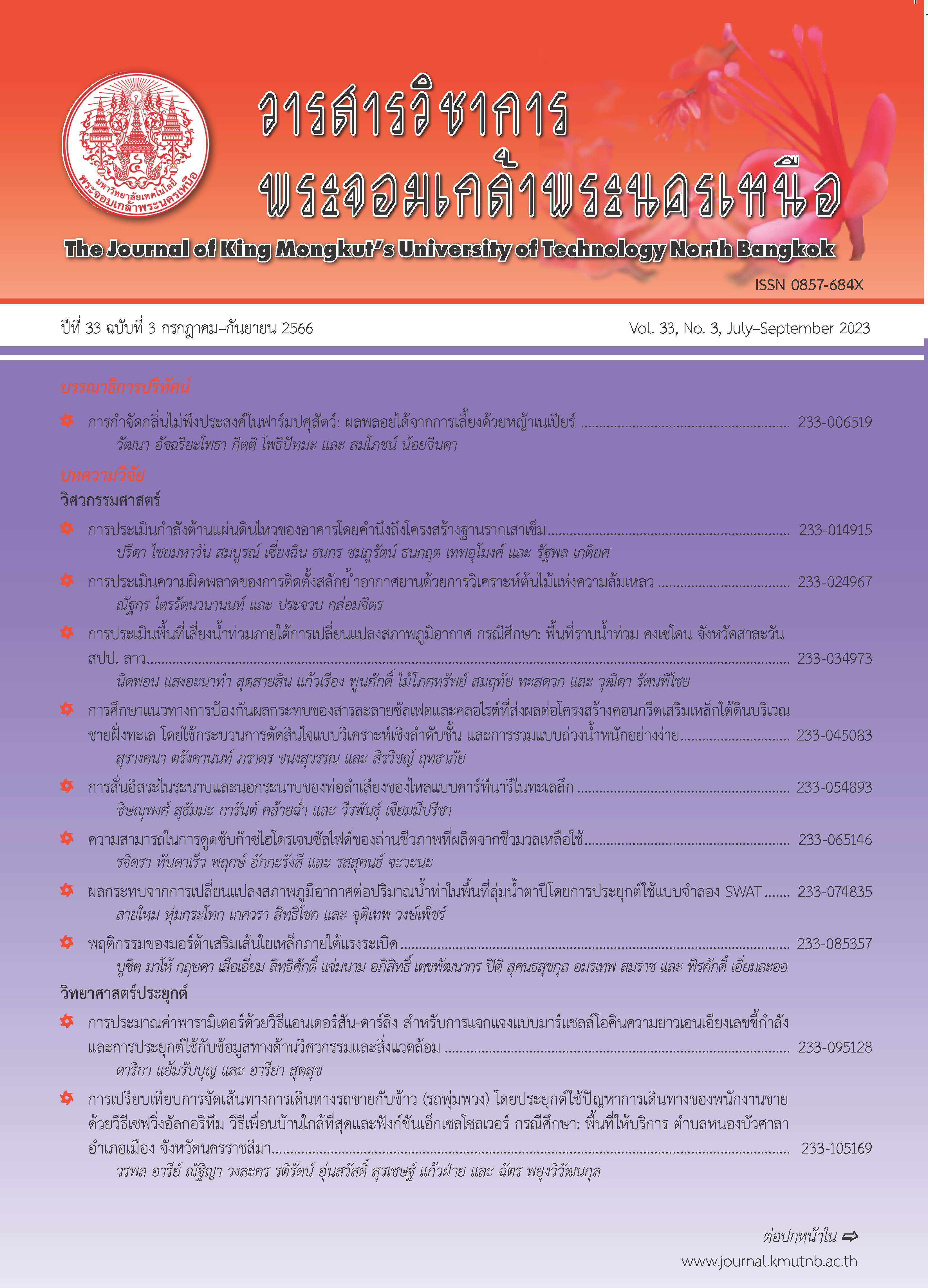การพัฒนารูปแบบศักยภาพผู้บริหารเพื่อเข้าสู่ตำแหน่งกรรมการบริษัทร่วมทุนในอุตสาหกรรมพลังงานข้ามชาติในยุคดิจิทัล
Main Article Content
บทคัดย่อ
วัตถุประสงค์ของการวิจัยคือ 1) เพื่อค้นหาองค์ประกอบหลักและองค์ประกอบย่อยของรูปแบบศักยภาพผู้บริหารเพื่อเข้าสู่ตำแหน่งกรรมการบริษัทร่วมทุนในอุตสาหกรรมพลังงานข้ามชาติในยุคดิจิทัล 2) เพื่อสังเคราะห์รูปแบบการพัฒนาศักยภาพผู้บริหารฯ และ 3) เพื่อพัฒนาคู่มือแนวทางการพัฒนาศักยภาพผู้บริหารฯ โดยใช้กระบวนทัศน์แบบรังสรรค์และปฏิบัตินิยม ระเบียบวิธีวิจัยอนาคตการณ์แบบผสมด้วยเทคนิคเดลฟายเชิงนโยบาย เริ่มจากการศึกษาเอกสารและงานวิจัยที่เกี่ยวข้องเพื่อนำมาสร้างเป็นเครื่องมือเก็บรวบรวมข้อมูลจากผู้เชี่ยวชาญซึ่งเป็นกรรมการบริษัทในอุตสาหกรรมพลังงานรวม 18 ท่าน ในการทำเดลฟายรอบแรกแล้ววิเคราะห์ด้วยวิธีวิเคราะห์ข้อมูลเชิงคุณภาพเพื่อนำไปสร้างเป็นแบบสอบถามความคิดเห็นผู้เชี่ยวชาญเพื่อยืนยันความคิดเห็นและหาความสอดคล้องกันของข้อมูลในระหว่างการทำเดลฟายในรอบที่ 2 เป็นต้นไป จนได้ค่าความสอดคล้องกันตามเกณฑ์เทคนิคเดลฟาย (IQR.<1.5, CV.<0.5) จากนั้นจึงนำองค์ประกอบทั้งหมดที่ได้รับฉันทามติมาสังเคราะห์เป็นรูปแบบการพัฒนาศักยภาพผู้บริหารฯเชิงแผนภาพ และพัฒนาเป็นคู่มือขึ้น รูปแบบนี้ได้รับการเห็นชอบจากกระบวนการการสนทนากลุ่มย่อยด้วยมติเอกฉันท์ว่ามีความเชื่อถือได้และมีประโยชน์ในการนำไปประยุกต์ใช้ ผลวิจัยพบว่า: รูปแบบศักยภาพผู้บริหารฯประกอบด้วยองค์ประกอบหลักทั้ง 4 ด้าน คือ ศักยภาพด้านการวางยุทธศาสตร์ธุรกิจและอุตสาหกรรม (มี 8 องค์ประกอบย่อย) ศักยภาพด้านการสื่อสาร (มี 5 องค์ประกอบย่อย) ศักยภาพด้านความสัมพันธ์กับผู้อื่น (มี 7 องค์ประกอบย่อย) และศักยภาพด้านการแก้ไขปัญหาและสถานการณ์ (มี 8 องค์ประกอบย่อย) นอกจากนี้คู่มือที่ผู้วิจัยได้พัฒนาขึ้นนี้ได้ผ่านการประเมินโดยผู้ทรงคุณวุฒิด้วยมติเอกฉันท์ว่ามีความเหมาะสมและสามารถนำไปใช้ในการพัฒนาศักยภาพผู้บริหารฯได้อย่างมีประสิทธิผล
Article Details

อนุญาตภายใต้เงื่อนไข Creative Commons Attribution-NonCommercial-NoDerivatives 4.0 International License.
บทความที่ลงตีพิมพ์เป็นข้อคิดเห็นของผู้เขียนเท่านั้น
ผู้เขียนจะต้องเป็นผู้รับผิดชอบต่อผลทางกฎหมายใดๆ ที่อาจเกิดขึ้นจากบทความนั้น
เอกสารอ้างอิง
International Monetary Fund, “Executive Summary,” in World Economic Outlook October 2018, Washington, DC, USA: IMF Publication Services, 2018, pp. xv.
World Economic Forum, “Framework” in Fostering Effective Energy Transition, Switzerland: WEF, e2020, pp. 11–13.
United Nations, “Ensure access to affordable, reliable, sustainably and modern energy for all,” in The Sustainable Development Goals Report 2020, New York, NY, USA: United Nations, 2020, pp. 38–39 & 50–51.
T. Seba, “Participatory Energy, Business Model Innovation and Disruption,” in Clean Disruption of Energy and Transportation, Silicon Valley, CA, USA: Clean Planet, 2014, pp. 10-12.
B. B. Bhasin, “Doing business in ASEAN,” in Doing business in the ASEAN Countries, Business expert, NY, USA: Business Expert, 2010, pp. 173–191.
Asian Development Bank, “Southeast Asia,” in Asian Development Outlook 2020, Philippines: ADB, 2020, pp. 263–312.
B. Garratt, “The board as the fulcrum of business performance,” in The Fish ROTS from the HEAD: Developing Effective Board of directors, UK : CPI Group (UK) Ltd., e2010, pp. 32–47.
B. Dominic and W. Mark, “Where Boards Fall Short,” in Harvard Business Review, vol. 93 Issue 1/2, Cambridge, MA, USA: 2015, pp. 98–107.
Deloitte, “Director conduct,” and “The working of the board of directors,” in Duty of Directors, New York, NY, USA: Deloitte & Touche, 2013, pp. 22–58.
P. Suchart, “The of Futures Research Guideline and Characteristics of the policy Delphi,” in Futures research science: 1, Bangkok: Sarmlada, 2018, pp. 19–27 & 79–82 (in Thai).
J. W. Creswell, “The Selection of a Research Approach,” in Qualitative Inquiry and Research Design : Choosing Among Five Traditions, CA, USA; SAGE Publication, 2014, pp. 1–9.
H. A. Linestone and M. Turoff, “A method for structuring a group communication process, so that the process is effective in allowing a group of individuals to deal with a complex problem,” in The Delphi Method: Techniques and Applications, Massachusetts, MA, USA: Addison-Wesley, 1975, pp. 262-287.
S. Tanin, “The Delphi technique,” in Research and Statistical Analysis with SPSS, Thailand, S.R. Printing Mass Production, 2009, pp. 111 (in Thai).
A. V. D. G. Heiko, “Technological Forecasting & Social Change: Consensus measurement in Delphi studies Review and implications for future quality assurance,” Journal of EBS Business School, vol. 79, no. 8, pp. 1525–1536, 2012.
S. Wandee, “The Direct and Summative Content Analysis,” in Data Analysis of the Qualitative Research, Bangkok; Siam Paritat, 2018, pp. 83–89 (in Thai).
C. Supang, “Data Triangulation,” in Qualitative Research Data Analysis, Bangkok: Chulalongkorn Publishing, 2016, pp. 32–36 (in Thai).
J. P. Keeves, “Model and Model Building,” in Educational Research, Methodology and Measurement: An International Handbook, United Kingdom: Emerald Publishing Limited, 1997, pp. 386–393.
M. S. Knowles, E. F. Holton, and R. A. Swanson, “Advancements in adult learning: Adult learning within Human Resource Development,” in The adult learner: The Definitive Classic in Adult Education and Human Resource Development, Burlington, MA, USA: Elsevier Inc., 2005, pp. 165-182.
R. A. Noe, J. R. Hollenbeck, et al., “Dysfunctional Manager,” in Fundamental of Human Resource Management, Great Britain: McGraw-Hill Irwin, 2011, pp. 316.
U.S. NRC, “What are IDPs?,” in The Individual Development Plan (IDP) Process, USA: United States Nuclear Regulatory Commission, 2008, pp. 2–4.

